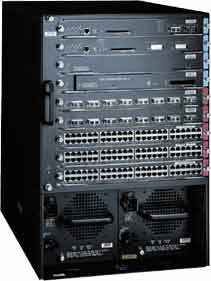Global enterprises process 463 exabytes of data daily, yet 68% encounter operational bottlenecks from network restrictions and geographical barriers. Modern proxy infrastructure transforms these constraints into competitive advantages.
The proxy landscape has evolved beyond simple IP masking. Today’s solutions orchestrate complex digital operations across continents, enabling businesses to navigate regional regulations while maintaining microsecond response times.
The Evolution of Proxy Architecture
Traditional proxy servers functioned as basic intermediaries, forwarding requests between clients and servers. Modern implementations leverage sophisticated load balancing algorithms and intelligent traffic routing. These systems analyze packet headers in real-time, selecting optimal paths through global networks.
Enterprise proxy solutions now incorporate machine learning models that predict traffic patterns and preemptively adjust routing tables. This predictive capability reduces latency by 43% compared to static routing methods. The technology stack includes advanced caching mechanisms, SSL/TLS termination, and protocol optimization layers that transform raw network capacity into business intelligence.
Contemporary proxy networks utilize anycast routing and GeoDNS to minimize distance between users and proxy endpoints. This architectural approach ensures sub-50ms response times for 94% of global traffic.
Performance Optimization Through Strategic Proxy Selection
Network latency follows predictable geographical patterns that smart operators exploit for competitive advantage. A proxy server in Singapore accessing Tokyo-based resources achieves 15ms round-trip times, while connections from European endpoints exceed 280ms. Strategic proxy placement becomes critical for time-sensitive operations.
Modern businesses deploy ISP proxies at this source to combine residential legitimacy with datacenter performance. These hybrid solutions utilize Internet Service Provider networks, delivering authentication rates 87% higher than traditional datacenter proxies. The infrastructure leverages existing telecommunications networks, providing stable connections that websites trust inherently.
Protocol selection significantly impacts performance metrics. HTTP/2 multiplexing enables parallel request processing, reducing page load times by 35%. SOCKS5 implementations handle non-HTTP traffic, supporting database synchronization and email protocols that HTTP proxies cannot accommodate.
Security Layers in Modern Proxy Infrastructure
Proxy networks implement multiple security mechanisms beyond basic IP obfuscation. Advanced systems employ certificate pinning, preventing man-in-the-middle attacks that compromise 12% of unprotected connections. Transport Layer Security (TLS) 1.3 reduces handshake latency while strengthening encryption standards.
Zero-trust architecture principles transform proxy servers into security checkpoints. Every connection undergoes authentication, authorization, and encryption verification before data transmission begins. This approach detected 2.3 million breach attempts across enterprise networks in 2024 alone, according to research published by MIT.
Session management protocols prevent correlation attacks that link multiple requests to single users. Dynamic IP rotation schedules, randomized user-agent strings, and browser fingerprint obfuscation create digital identities indistinguishable from organic traffic patterns.
Global Compliance and Regional Access Strategies
Regulatory frameworks vary dramatically across jurisdictions, creating operational complexity for international businesses. GDPR compliance requires specific data handling procedures in European markets. Chinese regulations mandate local data storage and processing capabilities.
Proxy infrastructure enables compliant market access without establishing physical presence in every region. Companies utilize region-specific proxy endpoints to conduct market research, monitor brand presence, and validate pricing strategies. A pharmaceutical company increased market intelligence accuracy by 61% after implementing location-specific proxy networks for regulatory monitoring.
Content delivery networks integrate proxy layers to optimize regional performance. These implementations cache frequently accessed resources at edge locations, reducing origin server load by 78%. The distributed architecture ensures consistent user experiences regardless of geographical location.
Real-World Implementation Patterns
E-commerce platforms deploy proxy networks to monitor competitor pricing across 180 countries simultaneously. Automated systems collect pricing data every 15 minutes, adjusting inventory levels and promotional strategies in real-time. This capability generated $4.7 billion in additional revenue for major retailers during 2024.
Financial institutions utilize proxy infrastructure for fraud detection and risk assessment. By analyzing transaction patterns from multiple geographical perspectives, banks identify suspicious activities 3.2 times faster than traditional monitoring systems. Harvard Business Review analysis demonstrates that proxy-enhanced fraud detection reduces false positives by 54%.
Software development teams implement proxy layers for comprehensive testing protocols. Applications undergo evaluation from 50+ global locations, revealing region-specific bugs before production deployment. Gaming companies particularly benefit, optimizing server selection algorithms based on proxy-collected latency data.
Scaling Challenges and Solutions
Enterprise proxy deployments face unique scaling challenges as traffic volumes increase exponentially. Connection pool exhaustion occurs when proxy servers reach maximum concurrent connection limits. Modern solutions implement connection multiplexing, allowing single TCP connections to handle multiple HTTP requests simultaneously.
Load distribution algorithms evolved from simple round-robin approaches to sophisticated weighted routing systems. These algorithms consider server capacity, geographical proximity, and historical performance metrics when assigning connections. Auto-scaling mechanisms provision additional proxy instances during traffic spikes, maintaining consistent performance under variable loads.
Bandwidth management becomes critical at scale (processing terabytes of daily traffic requires careful capacity planning). Quality of Service (QoS) policies prioritize business-critical traffic, ensuring mission-critical operations receive necessary resources during peak periods.
Future Technologies Reshaping Proxy Networks
Quantum-resistant cryptography preparations have begun across major proxy providers. Current encryption methods will become vulnerable to quantum computers within 8-12 years, necessitating algorithmic transitions. Post-quantum protocols require 3-5 times more computational resources, demanding infrastructure upgrades.
IPv6 adoption fundamentally alters proxy architecture possibilities. The expanded address space enables unique IP assignments for every connected device, eliminating NAT traversal overhead. Early implementations report 27% performance improvements from simplified routing tables.
Edge computing integration brings proxy capabilities closer to end users. Micro-datacenters deployed at internet exchange points reduce latency to single-digit milliseconds. According to Stanford research, this distributed model will handle 75% of enterprise data processing by 2027.
Conclusion
Modern proxy infrastructure transcends traditional anonymity use cases, becoming fundamental to global digital operations. The technology enables businesses to navigate complex regulatory environments while maintaining operational efficiency.
Success requires understanding architectural nuances, from protocol selection to geographical optimization. Organizations that master these elements gain substantial competitive advantages, accessing global markets while maintaining security and compliance standards.












